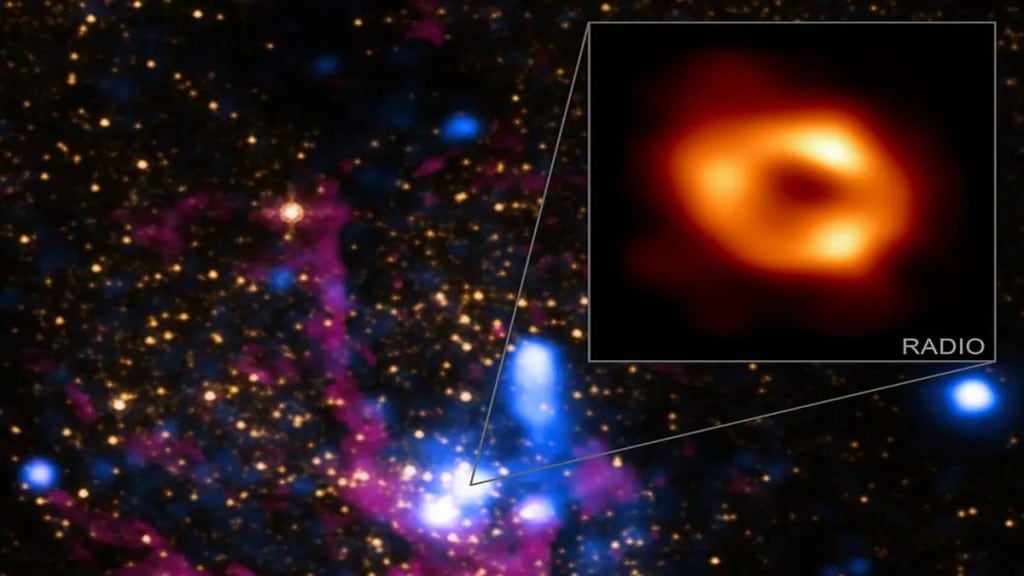Milky Way’s supermassive black hole has a mysterious past, and scientists have found some evidence to explain its behaviour. The supermassive black hole, Sagittarius A*, is located 26,000 light-years away from Earth in the center of our galaxy.
The black hole is a gargantuan tear in space-time that is 4 million times the mass of our sun and 14.6 million miles (23.5 million kilometers) wide. However, it is still not unknown how the black hole existed and why it is spinning surprisingly fast and out of orientation with the rest of the galaxy.
Now, data from the telescope that first captured the black hole’s image in 2022 has revealed some clues. According to the clue, the Sagittarius A* was born from a cataclysmic merger with another giant black hole billions of years ago. Interestingly, it’s still showing the effects of this violent collision. The scientists have published their findings in the Nature Astronomy journal.
“This discovery paves the way for our understanding of how supermassive black holes grow and evolve,” study lead author Yihan Wang, an astrophysicist at the University of Nevada, Las Vegas (UNLV), said in a statement, as quoted by Live Science. “The misaligned high spin of Sgr A* indicates that it may have merged with another black hole, dramatically altering its amplitude and orientation of spin.”
According to the researchers, Sagittarius A* is like a powerful engine that sucks matter now and then and spits it out at near-light speeds. Consequently, this creates a feedback process that has shaped our galaxy since its beginnings. It is noteworthy that the black hole makes up hardly 0.0003 percent of the Milky Way’s mass.
The researchers believe that the supermassive black hole was also formed like other black holes which are from the collapse of a giant star or gas cloud. Moreover, when the black holes grow massively, they start feeding on other supermassive black holes. Supermassive black hole mergers occur when entire galaxies merge together.
To get more details about the origins of Sagittarius A* the researchers behind the new study used data taken from the Event Horizon Telescope to create a model of the black hole’s behavior throughout time.
The Live Science report revealed that the astronomers discovered the black hole’s unusual spin. This is completely misaligned with our galaxy’s rotation and it was best explained by a massive merger event with the supermassive black hole of another galaxy.
“This merger likely occurred around 9 billion years ago, following the Milky Way’s merger with the Gaia-Enceladus galaxy,” study co-author Bing Zhang, a professor of physics and astronomy at UNLV, said in the statement, as quoted by Live Science. This merger not only adds evidence to the idea that black holes can grow ever larger by gobbling up their own kind, but also “provides insights into the dynamic history of our galaxy,” Zhang added.
The scientists maintain that they are waiting for the construction of space-based gravitational wave telescopes such as NASA’s and the ESA’s Laser Interferometer Space Antenna (LISA) project to get evidence on the giant black holes merging across the universe.
Once LISA is lifted to space in 2035, it will detect the shock waves created in space-time when supermassive black holes collide, they maintain.

